Friday morning's sunlight roused us from slumber, and we were giddy to start our day. The Front Desk employee greeted us and asked if we wanted the breakfast buffet in the lower-level dining room? Instead, we said that it was the perfect weather to eat al fresco, so we intended to have breakfast in the park. The woman responded, "Quite!" The British say "Quite" as they say "Indeed", which means "I agree" or "You are correct".
Lewis and I wanted to eat outdoors as often as possible to enjoy Britain's mild temperatures. We chose our hotel for its privileged closeness to one of London's beautiful gems: Kensington Gardens. It is one of eight royal parks in London: hereditary possessions of the Crown that are given freely for public enjoyment. It is merely one street from the hotel!
Encompassing 265-acres, it’s a huge green space. Juxtaposed with Hyde Park, Kensington Gardens is an iconic landmark. It got its name from initially being part of Kensington Palace, circa 1689. (Last year, Lewis and I toured the palace, which is home to the Duke and Duchess of Cambridge, as well as other princely and ducal families. To see our tour, please use this link: https://halfwindsorfullthrottle.blogspot.com/2021/10/our-trip-to-london-uk-part-6-heritage.html ).
Since it is an extension of the gardens at Kensington Palace, it is a walled park with gate entrances. (One of them is Lancaster Gate).
At night, the gates are locked, but turnstiles allow people who are already inside to exit easily.
Enjoying the breezy morning, we breakfasted at the Italian Gardens Cafe, which overlooks a portion of the gardens called the Italian Gardens. It's an amazing transition from "big city" to rural tranquility. Here is my panoramic video of it...
Totaling £20, we selected freshly-squeezed orange juice (made while we waited), spinach-mushroom crepe, pistachio sfogliatella (challenging for any baker to make), and a beautifully-crafted latte from freshly-ground beans. Whereas most American-bred GMO milk (usually adulterated with growth hormones and unnatural foods given to the cows) makes our stomachs rumble uncomfortably, milk throughout Europe is easily digested. The servers and baristas worked efficiently with pleasant demeanors. The Italian cook was effusive to her colleagues and customers. Our food was delivered with bright smiles. That is significant because the United Kingdom has a non-tipping culture. Unlike in the USA, waiters, bartenders, baristas, and Hospitality workers are paid a livable wage (with Universal Healthcare), so they don't rely on gratuities. People do their jobs well because it's the right thing to do... not to trawl for extra money.
Throughout the capital, Lewis and I noticed an emphasis on recycling and lowering society's ecological "footprint". Plastic straws were replaced by decomposable paper ones. Compostable utensils (made by Vegware) replaced plastic ones. Reusable glassware, silverware, and dishes were offered whenever possible.
On the terrace, we enjoyed people-watching: dog-walkers with English terriers, joggers, shapely men walking in football (soccer) breeches, and girls walking their bicycles to the gate. It was a picturesque view.
For us, being able to walk around outside without instantly sweating was a pleasure! During this time of year, nobody wants to be outside in New York. Even though it is only 11-degrees south in latitude than London, it is overheated and feels like Miami. To see its typical summer heat, please use this link...
https://halfwindsorfullthrottle.blogspot.com/2022/10/comparative-summers-new-york-city.html
Chirping birds darted between the trees, and people's heels crunched on the gravel paths. We heard a multiplicity of languages: German, Italian, Mandarin, French, Korean, Urdu, Australian, Moroccan, Arabic, and Portuguese.
Carrying our coffee, we admired Queen Anne's alcove, built in 1705 by Sir Christopher Wren (England's premier architect), which is next to the cafe.
We strolled on the paved paths that intertwine the water garden. Replete with several fountains, waterfalls, flowerbeds, a pavilion, lush lawn, and plenty of benches, it retained its original layout for 150 years. Preservation is beauteous.
We saw one of England's famous "mute swans". Since the 12th-century, the monarchy continues to own all unmarked mute swans in England. They are a protected species.
An antique Rolls Royce was converted to a classy ice cream truck. Partnering with The Royal Parks (a charity), it is operated by Colicci, a family business founded in 1982 (when Ernie Colicci immigrated from Italy) that makes artisanal food. Now, they operate 30 sites in the capital.
Thrilled with a beauteous beginning to the day, we hailed a Black Cab that drove down the street.
American taxi drivers never exit their cars to open doors for their passengers, but the British cabbie politely did that. Such courtesy amidst a non-tipping culture! Once again, we stepped into a marvelously spacious vehicle—unseen in the huge USA, where we pay more to ride in cramped positions like this...
That's what you get in America's richest city. We were happy to be away of that.
As if in a First-Class airline seat, I extended my legs fully, and enjoyed the roominess of a typical London cab (while paying less than in NYC).
We savored the firm seats, elbow-room, comfy headrests, and—best of all—the big skylight!
It was like riding in a luxury car... yet priced normally. Life in London is nice. Enjoy Lewis' short video...
Instead of raising his voice through the divider window, the driver politely used the intercom to get our destination. I requested that he take us to St James's Palace. With a knowing nod in his rearview mirror, he replied, "Going to see the Queen's Guard, are you?" (The group's name is not "Guards"). We replied with a smiley "Yes!"
A Londoner gave us an Insider's Tip that the BEST place to view the guardsmen up-close is from that palace, as they march to Buckingham Palace. Every two days, regiments of guardsmen are replaced at a ceremony in front of the palace: Changing of the Guard. It involves four parades, as the outgoing and incoming regiments (and their bands) arrive, switch places, and go to their accommodations. Parades encourage soldierly self-development, so the United Kingdom is awash with it, and their troops are precise and marvelous. So, Lewis and I were ecstatic to see them, and we grinned as the car quietly zoomed forward.
Looking up through the skylight, we watched puffy clouds go by, as the quiet engine purred and carried us around the corner of Hyde Park into the aristocratic Mayfair district. We sped down Park Lane, rolling past prime real estate that is all owned by the 31-year-old Duke of Westminster (godfather to Prince George, the Queen's great-grandson).
Mayfair is one of the world's most expensive areas.
Crossing the boundary onto land owned by the Crown Estate, we drove along Green Park, which is a 47-acre royal park. Last year, we walked through it several times and treasured its natural landscaping and serenity. Please enjoy my short video of its pastoral scenery...
Imagine that as part of your downtown commute!
Driving down a road named Constitutional Hill, we saw the long wall that surrounds the Queen's gardens at Buckingham Palace. (Within a couple of days, we would be on the other side!) In front of the palace, our cab was halted on the traffic circle by a policeman. Apparently, a red-coated regimental band was using the road to get to St James's Palace. It was the Band of the Scots Guards. (I knew their name because I previously researched that day's Changing of the Guard schedule on a website).
Through our open window, we overheard the well-mannered constable talking with our driver, as well as another motorist. Thanks to Good Fortune, our cab was the last car permitted to drive down that road before the road was closed in preparation for the Guard Ceremony. (It pays to be punctual). Our driver thanked the constable by calling him "Governor". Then, via the intercom, our cabbie remarked to us, "He's a good chap. He'll let us through momentarily. That's jolly nice of him." (The British use "jolly" to mean "very", and a "chap" is a "fellow"). It was true; compared to the self-entitled policemen in the NYPD, London's constabularies exuded more respect for people.
Lewis and I felt like dignitaries, as our car was the only one permitted to drive along The Mall, whilst crowds of spectators lined the sidewalks. Everything was quite orderly.
The Mall is a thoroughfare named for "belle belle": a lawn game introduced by King Charles I of the Stuart Dynasty.
Before cars were invented, it was a promenade for people to be showy. (*Trivia: Founded in 1619, Virginia's Charles City County is named for him. In Boston, the Charles River and the Charlestown neighborhood are named for him).
The driver pulled over to the side of the road, and Lewis used his credit card for the usual contactless payment. Before we stepped out, the driver spontaneously offered to drive us around the corner onto Marlborough Road, so we were closer to St James's Palace. His unpaid maneuver was a cherished moment of above-and-beyond service. We swung open the large (but lightweight) door for the most-convenient exit possible, and we alighted from the cab onto the pavement. We waved goodbye to our friendly cabbie, and constables at the other end of the road let him out. The road is named for the Duke and Duchess of Marlborough, whose former mansion is across the street from the palace. Their lineage ended, and the property reverted to the Crown. Her Majesty uses the stately building as headquarters for the Commonwealth, which she heads.
The St James's District of London is an upscale area. (No, the name is not St. James'. The English language in Britain doesn't add periods after abbreviations: e.g.: Saint, Doctor, Mister. Also, the name uses the ancient grammar for a possessive name, so it is spelled as "James's"). It's named for a leper hospital that was built there in the 12th-century and was dedicated to Saint James the Less (Younger). James was "one of the twelve" chosen by Jesus Christ to spread early Christianity. Since 1189, the hospital was run by friars who kept it distanced/quarantined from the population via large fields to grow food and livestock.
During the reign of King Henry VIII, he wanted a place to keep his mistress, Anne Boleyn, near his home at the Palace of Whitehall on the River Thames. Supposedly, he showed her a map of London and invited her to flip a coin; wherever it landed would be her new home. It was a demonstration of his almighty power, which he was fond of exploiting.
Her coin-toss landed on the hospital, and the king uncaringly demolished it. In 1531, St James's Palace was built on its site, and it remains the showpiece of the area.
The land around it was safeguarded by the Crown and became today's Green Park and St James's Park.
Fireplaces within the palace bear the lovers' initials "H.A." from 500 years ago. Karmically for Anne, she became Henry's second wife but only spent one night there, before becoming a captive at the Tower of London fortress where she was beheaded by Henry's command. For his fourth wife, Henry built the Chapel Royal, which remains intact. Rapidly marrying and executing his wives, it was only Henry's sixth and final wife who hosted an official occasion at the palace.
In preparation for the Spanish Armada of 1588, Queen Elizabeth I resided there to rally her troops.
In 1638, King Charles I gave it to Marie de Medici who was the Queen of France and related to the Grand Dukes of Tuscany.
She lived there during her exile because she refused to end her regency and relinquish power to her gay son, King Louis XIII. Her daughter married Charles I and became Queen of England, Scotland and Ireland. That helped her get the free housing. Her personal confectioner, Giovanni Pastilla, invented lozenges named Pastilles, that are still enjoyed today.
*Please use this link to see our visit to Florence, where the Grand Duchy of Tuscany was headquartered and where the House of Medici began.
https://halfwindsorfullthrottle.blogspot.com/2022/03/our-trip-to-italy-part-2-of-7-florence.html
Monarchs of the Tudor and Stuart dynasties used the palace. After the Palace of Whitehall burned down in 1691 and 1698, kings of the Hanoverian dynasty split their time between St James's, Hampton Court Palace, and Windsor Castle. They also kept their mistresses in the palace. Consequently, the area was populated by Britain's aristocracy and elite gentleman's clubs, which still exist. It remains a working palace because that is where the Royal Court gathers (if not around the Queen), and it is the headquarters of the UK Diplomatic Corps. It is also a royal residence because members of the Royal Family reside there. A corner of its land contains Clarence House, built in 1825 for the Duke of Clarence—eventually King George IV. That is another royal residence, occupied by Charles and Camilla: the Prince and Princess of Wales and Duke and Duchess of Cornwall.
By the time we arrived at the palace, several tour guides were lecturing their groups.
We copied their positions and stood near the Queen's Chapel, with a great view of St James's Palace. It's a functioning chapel, and it looks like this...
Built in 1623, the chapel was part of the palace compound, but the road makes it seem like another property. It is a "Royal Peculiar". That means it is not under the jurisdiction of the Church of England; it is only answerable to the monarch.
We observed that everybody stood on the sidewalk, and nobody's feet were beyond the curb, so we did the same. Later, mounted policewomen instructed everyone to keep their feet off the street, so we were glad that we were already compliant. It was sensible for us to arrive at 10:10am because we got a prime place to stand. While I "held our spot" and eavesdropped on the tour guides, Lewis ventured to explore the exterior of the historic structure and walk through its arched hall.
To our dismay, we watched a group of tourists gather across the street hoping for a better view, which obstructed our view. Consoling everyone within earshot, a tour guide assured us that those schemers wouldn't be allowed to remain where they were. At 10:25, constables on horseback instructed those late-comers to move to our side of the street.
Accustomed to self-entitled rudeness in America, we feared that they would merely stand in front of us and thrust the early-comers out of their way. However, they were decent-mannered and knew that they arrived late, so they correctly moved through the existing crowd and stood at the back. We couldn't believe how nicely it happened, and we were thrilled to see orderly behavior.
Precisely on schedule, soldiers emerged from the palace and acted as sentries in the guardhouses in Friary Court (named as a homage to the original friars who worked there).
Troops who guard the monarch are part of the Household Division: five Foot Guards regiments and two Household Cavalry regiments. Thanks to information online, we knew that the guardsmen leaving St James's Palace were from a regiment of Coldstream Guards, and they were accompanied by the Band of the Welsh Guards. Before the guards appeared, the band assembled to play music.
Their logo is a national symbol of Wales: a leek. It is based on a 7th-century legend that Welshmen wore leeks to identify themselves during battle.
Emblems of leeks are seen on their collar insignia, and images of leeks are stamped into the buttons of their crimson tunics.
Formed in 1915, the Band of the Welsh Guards is one of five marching bands based at Wellington Barracks, and they consist of professional musicians. Inclusively, all types of ages and body-types can belong to the band and participate in grand functions. The band is part of the Royal Corps of Army Music.
After inspection, they performed upbeat music.
Next, Foot Guards emerged and lined up for inspection by their Captain of the Guard, who wore a gold aiguillette. They were part of the Coldstream Guards.
Formed in 1650, the Coldstream Guards is the oldest continuously-serving regiment in the British Army! In 1660, it marched from Coldstream, Scotland, to restore the monarchy, and that is how it earned its moniker. They are garrisoned at Wellington Barracks, as well as Victoria Barracks, at Windsor Castle. They contribute to the defense of the realm, and they are guardians of the monarch. It is a national honor to serve with them and be deployed around the world as part of Her Majesty's Armed Forces.
Watched by the taxpaying public, they underwent a strict inspection. Looking straight ahead, they stood properly with their chests out. (Sociologists agree that looking confident instills confidence).
Each of them must pass a meticulous checklist of inspections: brushed hats, polished buttons, oiled guns, ironed trousers, straight seams, chinstraps at the appropriate angle, and boots shiny enough to see their reflections. The British Army enjoys historical continuity, and it acquired an admired heritage of insignia and uniforms. Furthermore, the "personality" of each regiment is symbolized by its emblems and the colors of plumes in their hats. So, those uniforms must be reverently maintained.
Doing repetitive things in a particular way trains them to have a beneficial mentality. At that point in their careers, it is expected of them because they learned it during Boot Camp and Basic Training, and each soldier performed it well enough to be chosen as members of the Queen's Guard, which is a huge honor. They are "on parade" for the "eyes of the world", and everybody knows about them because their predecessors guarded Kings and Queens for 520 years.
While the soldiers were scrutinized, the band stunned us by performing a Disco song from 1965: It's Not Unusual. If you assume that military bands only play marches, you are wrong. The song was ironic because their visual display is centuries-old and unique in the world, yet it's not unusual in their society. Turn the sound on and enjoy my video of it...
With the inspection finished, a bugler used his horn to announce their departure.
There were six mounted constables on Marlborough Road; three lined up to lead the procession through the streets. The drum-major used his shiny mace to signal his band, and they turned and readied their instruments. With military precision, the troops also turned on their heel and readied their weapons for the march. Officers yelled orders, and suddenly a drum cadence began. With bad-timing, one of the horses released a mound of poop, and its rider thought that was hysterically amusing—thinking of the inconvenience for the glossy guardsmen behind her. (When marching, British troops never break their synchronized formation to sidestep manure or avoid mindless tourists). Smartly, the drum-major led his musicians in a way that permitted them to march on either side of the poop. Everyone's boots remained clean for the parade.
As the regimental band marched past us, we were awestruck with their talent, appearance, and professionalism. Following them, the Queen's Guard swung their arms with pendulous precision, and their legs stepped in perfect unison. Had I crouched to photograph it, you would see every left foot raised at the same time to take a step forward. That's impressive teamwork. Mindfully, Lewis and I do not watch things through our cameras or mobile phones. (Others do that and miss the live-action events). I video-recorded the procession on my iPhone, but I watched it happen with my eyes. It was splendid. It truly is the absolute best place to watch the Queen's Guard. Please enjoy my video...
*To see when we witnessed the Changing of the Guard at the gargantuan Prague Castle in Czechia, please use this link:
https://halfwindsorfullthrottle.blogspot.com/2024/04/our-trip-to-prague-czechia-part-2-of-9.html
Please enjoy by brief video of the outgoing soldiers proceeding down The Mall for the Guard Changing Ceremony at the palace...
Their music echoed along the thoroughfare, and people relished the pageantry.
Some folks crossed St James's Park to watch the incoming soldiers marching out of Wellington Barracks to the palace. *They look like this...
Instead, Lewis and I entered St James's Park and proceeded in the other direction (away from throng). We intended to stand underneath the Elizabeth Tower and hear Big Ben ring at 11 o'clock.
Our English friend (and famed writer), Alastair Macaulay described St James’s Park in this way, “Despite the historic renown and political prestige of those buildings, here is a public space given over to the people of London—to trees, water, lawns, and flowerbeds.” Recently, it was awarded Green Flag status: an international accreditation of quality.
*(Earlier in the month, I discovered a street named St. James Place, in downtown Manhattan. On it, I saw St. James’ Roman Catholic Church: the second-oldest one in the city, circa 1835. Surrounded by NYC’s typical dilapidation and neglect, it was condemned in 1983 due to its unsafe roof, and a fire damaged it in 2011).
St James’s Café reminded us of a cafe in Amsterdam's Museumplein: snugly hidden under an outcropping—with grass covering its roof. Harmoniously, it doesn’t obstruct the serene landscape.
Dotted along the path, we noticed metal medallions imbedded in the ground. They lead people along a 7-mile trail that is named "The Diana, Princess of Wales, Memorial Walk".
Centered—with a noticeably different metal—is an item that resembles the ancient Lancaster Rose or York Rose. I'll describe those soon.
Nearing the park's perimeter, we saw a parade ground named Horse Guards Parade. Originally, it was the jousting yard for Whitehall Palace, during the Tudor dynasty. I photographed the building, which was the barracks and stables for 100 troopers of the Household Cavalry. It was commissioned by George II in 1745. It was the British Army headquarters until 1858; now it has offices for the Household Cavalry and 11 units of the Army's London District.
The Cavalry still provide mounted guards for the property and perform a Changing of the Guard ceremony. There are two regiments. Troopers attired in crimson tunics are members of the Life Guards.
Blue tunics identify squadrons of the Blues & Royals.
(I took this picture from the top level of a bus as we drove by, later).
With curiosity, we crossed Horse Guards Road and passed through the middle of a governmental complex via King Charles Street.
The immense complex contains the Northern Ireland Office (headed by the Secretary of State for Northern Ireland—where our doorman comes from), Foreign, Commonwealth & Development Office, Chancellor of the Exchequer, Office of Parliamentary Counsel, Registrar of Consultant Lobbyists (for transparency of lobbying), and Her Majesty's Revenue & Customs Office.
Years ago, Lewis and I visited Washington DC, and America's capital forbids its citizens to have such closeness to tax-paid buildings. We like how the UK's capital allows closeness and doesn't strangle the area with burgeoning bureaucracy, traffic jams, and aggressive riflemen behind every electrical-fence.
We noticed a red police car. Its distinctive color designates its special purpose.
Within London’s Metropolitan Police, there is a special branch titled Protection Command. Given red cars, its constables provide security for royalty, diplomats, and government officials. For vehicle escorts, the police also have a squad named Special Escort Group. Its motorcyclists are the few in the UK who carry firearms whilst riding.
To the left, Richmond House is the governmental headquarters for the Department of Health & Social Care.
It occupies the spot where the Duke of Richmond's townhouse stood, from 1660 until 1791. He was the illegitimate son of King Charles II, and NYC's Richmond County/Staten Island is named for him. The third duke died without an heir, so the property reverted to the Crown. The 11th-and-current Duke of Richmond still has plenty of property.
On the topic of property, Lewis and I valued the fanciful structures that create a pretty skyline.
Manhattan's skyline had beauty like London's until the 1920s.
(Clusters of remnants survive in various out-of-the-way places).
Thereafter, the city's greed destroyed all but six (irreplaceable) structures from the 1700s and more than half of the ornate ones from 1800s. Now, city-life is overshadowed.
We turned right and walked to a traffic circle at Parliament Square, which encircles a statue of Mahatma Gandhi.
(His peaceful resistance collaborated with the Queen's cousin, Lord Louis Mountbatten, to obtain India's freedom from the British Empire. Please use this link to see our visit to Gandhi's final home:
https://halfwindsorfullthrottle.blogspot.com/2018/10/our-trip-to-india-part-1.html
We found ourselves looking up at the magnificent Palace of Westminster.
Starting in 1049, it was the royal residence in London, until a fire gutted it in 1512.
Simultaneously, the corrupt Catholic Cardinal, Thomas Wolsey, enlarged a nearby house until it rivaled the palace. In 1530, King Henry VIII took it from Wolsey and let the rebuilt Westminster be used for Parliament. He expanded Wolsey's house until it became the gigantic Palace of Whitehall.
(His funding came from his dissolution of Catholic monasteries, where he blamed the monks' shameful profiteering. Needing excuses to close others, he reclassified the monks' mutual masturbation as illegal sodomy). As I mentioned, Whitehall was destroyed by fire, but the governmental complex that we walked through is built on its site in a similar layout. Both properties are still owned by the Crown, which means that "Big Ben" is owned by the Crown. The Palace of Westminster is used by the Legislature: House of Commons and House of Lords. The iconic clocktower is at the northernmost point, and it was recently named the Elizabeth Tower to commemorate the Queen's exceptional reign.
World-famous, its belfry chimes a melody four times per hour: each is longer than the previous. The 20-note tune is titled Westminster Quarters. (The doorbell of my childhood home played it). As each hour is reckoned, the largest bell tolls and produces the gong sound that resonates over London's rooftops. That huge bell is nicknamed Big Ben. I got a great photograph of the splendid tower!
During our visit, last year, the bells were silent due to the conservation efforts and renovation of the 316-foot tower, which was erected in 1859. This year, we noticed widespread media coverage that celebrated the return of the beloved bells. So, we arrived within minutes to witness Victorian-era engineering and hear the glorious chiming... but nothing happened. Alas, the hands of the enormous clocks indicated 11am, but the clocktower was mute. It was disheartening. Looking online, I saw an update in the previous month where Parliament acknowledged that delays would allow the bells to function by October. "Earlier this year, works inside the Tower were planned in a different sequence, which allowed us to forecast the permanent reconnection of the bells earlier than the full completion of the project." So, Lewis and I missed their sounds twice in two years. I'm certain that we'll treasure their sounds whenever we hear them in the future (especially since we're deprived in America, where bell-towers are silenced by ignorant Noise Pollution Laws). Perhaps visitors should subscribe to the Elizabeth Tower Newsletter, to be sure.
Not to be put asunder, Lewis and I marshaled our enthusiasm and walked along the length of the Palace of Westminster to admire its grandiose architecture.
Seen above, the enormous Victoria Tower looked splendid, as did its riverside gardens—full of people reading newspapers and serenely watching the boat traffic on the River Thames.
Across the street, we studied the fascinatingly intricate design of Westminster Abbey. It is another Royal Peculiar. The abbey and parliament building are a UNESCO World Heritage Site. Seen below is my photo of the abbey's Gothic-style Lady Chapel. It is at the rear, and it was built by King Henry VII in 1503 in honor of the Virgin Mary.
Interestingly, we saw statues of creatures on the roof that were arranged in lines (looking like this)...
Tudor roses are heraldic emblems of England.
Begun by the Tudor dynasty in 1485, they symbolize the union of the House of Lancaster (red rose) and the House of York (white rose)… which were previously rivals for the throne. Long ago, the House of Plantagenet was England’s royal family, originating in Anjou, France. With the publication of the Magna Carta in 1215, their ruling kings were the first to cease being absolute monarchs (absolute monarchies continued elsewhere in Europe for another 800 years) and become constitutional monarchs. During their reign, the English language became standard. In 1455, a dispute of succession erupted between two of its cadet branches: the House of Lancaster (founded 1267 and established Eton College and King’s College at Cambridge) and the House of York (founded 1385). A civil war lasted for 32 years, and it was named War of the Roses. Yorkist families (i.e.: Duke of York, Earl of Warwick) battled with Lancastrian families (i.e.: Earl of Devon, Earl of Dorset). *[Trivia: Maryland's Dorchester County is named for the Earl of Dorset].
Usurping the throne from Richard III (House of York), Henry VII (House of Lancaster) ended the war in 1485. He crowned himself via “right of conquest”. Since his Welsh surname was Tudor, he became the first monarch of the House of Tudor, which ruled England until 1603. The next year, he married Princess Elizabeth of York (daughter of a prior English king), which drew the factions closer. (When Elizabeth’s father suddenly died, her 12-year-old brother became the king. But their uncle, Richard, Duke of Gloucester, entrapped him in the Tower of London—where he “disappeared”. Richard got Parliament to delegitimize the marriage of Elizabeth’s parents, which made her family ineligible for the throne). The new king, Henry VII, married Elizabeth in the Abbey, and their son was born eight months later. The Tudor rose blended both colors to solidify that dynasty.
Tudor roses are found throughout England in historical structures and documents, embroidered in traditional-looking uniforms, and within modern contexts.

Looking across Abington Street Gardens, we were wowed by the ornamental brickwork of Millbank House.
The whole area is named Millbank because a watermill (owned by the abbey) existed there in the 1550s.
Suddenly, we witnessed a police escort surrounding four minivans. Unlike in the USA, the British police avoided noise pollution by not activating their sirens unnecessarily. The convoy sped by silently. Without knowing who was inside, onlookers paused and waved cheerfully at them. We did, too.
We strolled handsomely along the River Thames to visit the Tate Britain Museum. Located in the Millbank neighborhood, it was constructed in 1893. It's adjacent to a ferry terminal for two routes: RB2 and RB6. Here's a map of ferries on the Thames.
Standing outside the museum, we liked its supersized banner that proclaimed free admittance.
Like most of London's big museums, it is free to everyone; there is no admission cost unless you want to see special exhibitions. Lewis and I love that; art is a priority to society and it is given accessibility because government funding is prudently applied. It's amazing what a country can do when it's not wasting money on far-flung schemes (unlike the USA) and doesn't embezzle its lottery monies (like the USA does). It also improves the quality of life for UK citizens, and enhances their life/work balance.
Inside, collections range from 1500's Tudor artwork to contemporary creations.
Seen above, the artsy gift shop was where Lewis bought a £8 pair of socks patterned with colorful geometrics created by Piet Mondrian in the 1920s.
Of note were the architectural elements: geometric patterns carved of stone in monochromatic tones.
Exiting the building, we intended to have lunch in SoHo. We eyed a Black Cab approaching and waved at it. Dutifully, the driver paused but politely directed us to use the taxi that was already waiting in front of the museum. He implied that it was unfair for him to take passengers since that fellow was already waiting. It was nice to see professionals following etiquette and rules; NYC cab drivers aggressively believe in "first come, first serve". Turning to where the cabbie gestured, we were gladdened to see a conveniently-placed taxi stand outside the museum. Such things don't exist in Manhattan.
That driver sped away, and we ambled toward the parked one. Through a "twist of Fate", another couple used it, but we noticed an oncoming bus (#87) and recognized it as one that would take us towards SoHo. Conveniently, bus stops have easy-to-read maps that identify landmarks along routes.
Furthermore, bus stops have digital countdown clocks that provide the upcoming arrival times of various buses.
In contrast, NYC's "new" bus stops don't have either of those things; their priority was getting space for advertisement revenue.
Most of London's double-decker buses are electric for low-emissions and less noise pollution. Despite their mammoth size, they are quiet!
Listen to my short videos of buses arriving and departing; you'd never know it was so close to me!
We love that type of eco-friendly innovation that avoids noise pollution. In Manhattan, buses with badly-made engines sound like Soviet-era tanks rumbling on the avenues. When walking on most avenues, people must shout at each other to be heard. Turn on the sound for my videos of them...
Now, listen to a London bus again...
Excited to use double-decker buses, Lewis often chose seats upstairs. With good fortune, we usually got first-row seats, which gave us panoramic views of the beautiful scenery. The year-round scenery is always worth admiring.
We also admired the cleanliness of the bus! The windows and plexiglass were spotless. No litter, chewed gum, scuff marks, shoe imprints, or discarded food. Things were as they should be.
Buses in Los Angeles, Chicago, Boston, Long Island's Nassau County, and throughout NYC's five boroughs are coated with dust, dirt, hand smudges, human spittle, spilled drinks, and grime. London's buses are more modern than America's wealthiest city, and they have e-charging sockets, and larger windows for more brightness.
We zoomed peacefully north, rolling past a building for MI5 (Britain's well-known spy agency), the National Technical Assistance Centre (for data recovery and lawful interception), and the headquarters for Burberry. After a traffic roundabout at Lambeth Bridge, we passed the Department for Environment Food & Rural Affairs, and then the rear of Westminster Abbey.
The tall bus drove up Whitehall with cushioned serenity and steered around the traffic circle at Trafalgar Square. It's one of the capital's most-popular gathering places, yet it remained orderly and clean. It was pleasant to relax in.
It was vastly unlike Manhattan's Herald Square...
... or Times Square—that locals avoid due to miscreants and trash.
As the bus proceeded along The Strand, Lewis pressed the button to "ring the bell" and make the bus stop. There is always plenty of time to descend the stairs and exit the buses, and drivers check their surveillance cameras to confirm that nobody is still using the stairs.
We invested time exploring the shops that sold gentlemanly attire and spiffy hats. The use of colors/patterns and craftsmanship was mesmerizing. Clearly, British society likes individuality. Men in Britain don't look like your typical ones.
Anecdote: Soon after graduating college, I developed a love of English shoes from Peal & Company. Founded in 1565, it is a shoemaker that earned royal warrants from King George V and the current Prince of Wales. I purchased two pairs, and they lasted for 10 years.
In dull contrast, American businessmen wear only three mundane colors: black, blue, and gray. It's indicative of an overpopulated society full of "followers" who merely hemorrhage money and don't improve the standards.
I purchased a plaid coat with autumnal colors that will nattily translate into woodsy winter colors.
From there, we meandered north into SoHo and onwards... and we ADORED the scenic greatness that London offers.
Peeking down a picturesque pedestrian lane, we were amused by a chalkboard sign at a gelatoria that said, "A well-balanced diet is a gelato in each hand". :-) Upper St Martin's Lane became Monmouth Street, and we explored the Borough of Camden. (*Trivia: Camden County in South Carolina is named for the Earl of Camden who initially owned Camden).
We stared up a plinth with six sundials; the column acts as a seventh. First erected in 1693, it's the focal point on a traffic roundabout within a neighborhood named Seven Dials that retains its 17th-century layout.
Curving through the capital, many cozy-sized streets are historic. Thanks to people's penchant for size-efficient (and fuel efficient) cars, navigating those curves is easy. We saw that throughout Europe, China, and Japan.
Westward, we used the pedestrian-only Moor Street and ogled a sign for Naked Soho: London's first sex-themed restaurant.
No, despite your imagination, patrons do not sit naked...
Instead, the food and ambiance is evocative of lusty sensuality.
At the intersection of Dean Street and St Anne's Court, we lunched at Hobson's Fish & Chips. It's a 25-year-old family-run establishment with friendly servers.
Gratefully, the UK has stringent ethical standards for fishing.
We sat outside in the cool breeze, knowing that New Yorkers were confined indoors due to sweltering temperatures that felt like 95-degrees. Our table was on another pedestrian alley, so we admired passersby while we munched on freshly-caught haddock that was lightly-battered and perfectly crispy. It was worth £11.95. Their seafood is sustainably raised and purchased from Billingsgate Fish Market. Their "chips" (potato wedges) are homegrown to provide traditional taste/texture, and they peel/cut them by hand. Fish and chips are fried separately in pure vegetable oil—without hydrogenated fats or additives. They also offer a gluten-free batter. Our taste buds confirmed that the oil was fresh and not reused from a prior day.
Lewis selected a shared platter of fried onion rings, codfish cakes, and fried squid rings. On the side, I ordered a £2 portion of Garden Peas (inexplicably can't get those in NYC), and they were perfectly-firm—as only freshly-picked ones can be—bursting with flavor. Costing three pounds and fifty pence, Lewis added a plateful of grilled eggplant & peppers.
Paying £2.95 each, we sipped bottles of refreshing Fentiman's Lemonade. Everything was tasty!
New Yorkers spend thousands of dollars on their outfits, yet they congregate at restaurants that exist in squalor. They sit on stinky pavement that reeks of spilled garbage, while sipping overpriced cocktails. They are inches from throngs of commuters who rush past their tables. In the background, there is the ever-present loud rumble of vehicular traffic—full of aggressive horn honking. The scene is undignified and unattractive, yet those morons overpay to be in it. People who settle for those standards are like kids who sit in the mud and don't know how much better their life could be. That is very typical of NYC and most of America.
After lunch, we headed south. One block away, Lewis was captivated by the cleverly-shaped pastries at No. 79 Coffee & Mousse.
Like many local businesses, it's cozily-sized, so you may walk past it if you don't look around (when in London, keep your eyes averted from your mobile phone, so you see nifty things). Lewis immediately took me inside, and the showcase was full of the cutest and endearing cakes.
Each morning, their pâtissiers use locally-sourced ingredients to envision cute cakes! Lewis spoke in Mandarin to the counter girls, who wore trendy-looking aprons. I chose a taro-flavored nine-layer crepe cake (reminiscent of the ultra-pricey ones sold by Lady M), and Lewis picked a rose-shaped pastry made of white chocolate and full of two delectable creams. We washed it down with a well-made Bubble Tea (Boba Tea). Each came on a pretty porcelain plate, and you'll notice that the staff thoughtfully inversely-matched the colors of the pastries to the plates!
Indicative of the local lifestyle, the cup said, "Happy Every Day"!
The interior had a decidedly cutesy-trendy flair that's often found in Chinese, Japanese, and Korean places. The pink walls were painted to seem like suede, and brass Parisian-style chairs clustered around marble-topped tables that were under spotlights (for ideal Instagram photo-taking). Entering a rear vestibule, the lavatory was cozily down two steps and had luxury soaps and lotion, fresh flowers, and scented candles.
Burning calories, we strode along Oxford Street. Originally, it was an ancient Roman road from Londinium (where the 1.12-square mile City of London is—within the capital named London). Banners stretched over the street proclaiming "Clean Power" as positive support against climate-change. Unlike NYC's concrete retail avenues, Oxford Street is lined with trees.
Oxford Street is a major retail area, yet it is very clean. There were a few beggars and only one person shouting for attention (in NYC's Times Square, there are dozens of each... and mounds of litter, filth, and trash). We admirably commend the City of Westminster for its effective clean-up efforts. In addition to fleets of street sweepers that drive along the streets, sidewalks are cleaned with pushable ones! We never saw that before!
Eco-friendly bicycle-carts allow sanitation workers to empty trash bins and keep the pavement tidy.
The City of Westminster smartly invests in (quiet emmission-free) electric machinery and provides upstanding jobs to keep itself very clean. Tax dollars well-spent!
That civic pride is unlike NYC's overpaid sanitations workers who are slobs that spill garbage...
...and leave it there without picking it up. Other people must clean-up for the garbage men!
Even NYC's street sweepers emit more dust and fumes than their useless brushes pick up! Any New Yorker will agree.
In contrast, London behaves like a truly first-world city with the quietest garbage trucks (100% electric for zero emission)—which were very clean—and the workers' uniforms were clean, too.
Within a few minutes, we entered Selfridges Department Store.
Unlike Harrods and Liberty Department Store, it was similar to typical ones in America. Perhaps due to its American roots, it strives to be contemporary. Doing so, it discarded its beautiful 1910s interior (see it in the British TV series Mr. Selfridge). Now, it looks nice but not outstanding.
When opened in 1909, it was the second-largest store, after Harrods. With elan and showmanship, Harry Selfridge brought American knowhow to England... but his American overextensionism caused his personal bankruptcy (like Wall Street speculators). Now, it's owned by Ireland's wealthiest family: the Weston clan. *To see when we visited the grandest store in the Netherlands, which they own, please use this link:
https://halfwindsorfullthrottle.blogspot.com/2019/08/our-trip-to-netherlands-part-4-of.html
*To see when we explored the grandest store in Ireland, which they own, please use this link:
https://halfwindsorfullthrottle.blogspot.com/2023/03/our-trip-to-dublin-ireland-part-7-of-7.html
In April, the store reopened from the pandemic, so hordes of shoppers flocked to it, but we didn't see any brands that couldn't be found easily elsewhere. In the upper level, Lewis danced on a floor piano to mimic Tom Hanks in the movie, Big. Ha ha!
Descending to the nearest Underground station...
...we rode an on-schedule train back to our hotel, where we changed clothes. It was a relief to use a subway that didn't have unsanitary (unlicensed) food carts dripping fruit juices on the floor—and the trains!—as happens in NYC. This is what it looks like...
(It's like a third-world country).
That night, we had hard-to-get reservations at Dishoom in Covent Garden. It is a well-regarded Indian restaurant that successfully has five locations in the capital. With perseverance and agility, I made our reservations two months earlier (whereas snooty NYC restaurants refuse reservations earlier than 3 weeks). Founded in 2010, Dishoom was recommended by several of Lewis' globe-trotting clients as a "Must See" that no self-respecting foodie would forgo. That location is the original, yet we chose it because it is near the Adelphi Theatre, where we had tickets to see a musical: Back to the Future. The word "dishoom" is known in Bollywood films and Sri-Lankan slang as a synonym for "bang".
Dressed for the cuisine, Lewis wore white linen salwar (the baggy trousers with tight ankles) that were made in India.
To evade the warmth of the Metro stations, we hopped aboard a red bus. Nearly any American will wince at the notion of using a bus at 5pm because that is the start of a "Rush Hour" commuter time. Manhattanites like Lewis never choose a bus during Rush Hour; even the delayed subways move faster than buses. However, in the well-organized metropolis of London, traffic moves efficiently with minimal delay, so buses are sensible options. Tax dollars are well-used, and Traffic Monitoring Systems coordinate traffic lights to facilitate hours of heavier traffic. (Despite what it claims—to falsely lure people—NYC's intersections are stupidly compressed into gridlock, due to badly-timed traffic lights that are green too long for lesser-used streets). For us, it was a realization that London can be efficient during the 5-8 "Rush Hour". We didn't feel anxiety or frustration as our bus rode unimpeded to our destination. It was such a relief. That's how life should be.
Alighting from the bus, we noticed jovial people congregating at pubs that were bedecked with flowerpots. Everyone seemed happy. Customers were served promptly, drinks were affordable, pubs were tidy, and customers behaved decently. We had enough spare time to pause and listen to the 27 bells of a glockenspiel carillon at Leicester Square! Here is my video of its music and its 11 mechanical figurines...
When we arrived punctually at Dishoom Covent Garden, we saw an enormous line that snaked past the full length of the restaurant! Wow, it surely is popular!
Just like our meal at Din Tai Fung, we smugly approached the hostess with the knowledge that they had a separate entrance for diners who made reservations. With a calm smile, she assured us that our table would be ready momentarily, and she asked us to wait to the side of the entrance. To our surprise, nobody on the walk-in line glowered enviously at us. In fact, they merely smiled and complimented Lewis' pants.
A lack of envy with a mix of pre-dinner happiness was indicative of a culture that doesn't "sweat the small stuff".
While we waited, a server presented a silver tray of chai tea made with freshly-pulverized spices. It was evocative of the aromatic teas that we sipped in India's capital of New Delhi!
A handsome host announced our names, I responded, and he guided us indoors. He also confirmed what I told the reservationist, that we were attending the theatre, that night. That ensured that food would be served promptly, so we remained punctual for the curtain-call.
Two months ago, I requested that the reservationist give us a deuce (table for two) downstairs, so we could admire the "open kitchen", bar, and bread-making counter.
Our table was perfectly away from foot-traffic, and our waiter was a tall, bearded gent. With a slight Northern-European accent, he looked like a Viking who might've settled in ancient England.
With a twinkle in his eye, he casually recited notable items on the curated menu, and he took our cocktail order. I chose a £9.90 Cyrus Irani: a margarita made with lime juice, Olmeca Altos Reposado tequila, and turmeric-honey lassi syrup. For the same price, Lewis sipped a Kohinoor Fizz: London Dry Gin, gooseberry syrup, lime, Aperol, sparkling wine, and egg white foam.
While a bearded bartender fiercely shook our drinks in shiny shakers, we noticed an employee going around to room to ignite new incense sticks. They provided lovely ambiance.
To begin our meal, we ate lamb samosas (made with Gujarati filo dough—not shortcrust). I love English lamb because it lacks the gamey flavor of its American cousin, due to healthier breeding. At the same price of £5.90, we also had fried okra. Lewis consumed a portion of (head-on) prawns, which had a piquant flavor.
We shared a Biryani pot of marinated chicken, ginger, garlic, mint, coriander and rice. The pot was sealed with dough, and it was cooked in the Kacchi style (raw meat layered with toppings). £13.90. For £15.70, I loved my bowl of mouth-watering mutton, marinated in red chili, ginger and garlic, then cooked with peppercorns and whole spices. (It's a shame that I rarely find mutton—or venison—on American menus). I consumed every morsel and drip of sauce! On the side, we got a £4.90 bowl of grilled broccoli and snow peas that were "tumbled" with chilis and lime.
Our waiter's smile glinted in the subdued lighting as he inquired about our dessert order. We liked his tactic, and you can use this link to understand why...
https://halfwindsorfullthrottle.blogspot.com/2016/09/strategic-power-of-suggestion.html
Lewis was curious about trying Eton Mess, which is a classic British dessert, so we were eager to try Dishoom's version, named Gulkhand Mess. It is a "mess" of freshly whipped cream, chunks of meringue, sliced strawberries, rose syrup, and gulkhand (a sweet preserve of rose petals from Pakistan). The presentation was prettily pink with enticing swirls of crimson. Our first time eating Eton Mess proved to make it one of our favorite desserts. The taste and blend of textures were so wonderful that we were tempted to get a second!
Originating at the kingdom's premiere college, Eton College (near Windsor Castle), the recipe began in 1893. It consists of strawberries mixed with cream (or ice cream). Meringue was added later.
Our waiter was keen on Lewis' idea to drink a rose & cardamom lassi for dessert. It was priced at £4.50. Throughout our marvelous meal, we remained impressed with the fair-pricing of restaurants in the kingdom's capital—especially considering that this brand is extremely popular. Part of the popularity stems from its excellence paired with non-greedy prices. We were happy to support that. Ergo, we agreed to pay the optional Service Charge, and we were heartened to see a guarantee that it was given wholly to the employees. (As students, Lewis and I worked at restaurants that confiscated gratuities for extra-profit).
Sauntering down the street, it was fun to use London's plethora of alleys, which originated during medieval times. They remain tidy, safe, well-lit, and people use them day-and-night.
We quickly arrived at the Adelphi Theatre on a main road named The Strand.
Lewis and I are enamored with London's West End theatre district. Lovable plays and musicals are staged perfectly in theaters that possess a blend of heritage and modernity, and they are affordable. British society values the performing arts and makes them accessible via affordability. That's why our tickets were fairly-priced at $75 each. In contrast, American theatre is ridiculously overpriced with extra fees and surcharges for anything imaginable, so it morphs into a "rare occasion" that theatergoers must save money for. Whereas Broadway theaters are run-down, neglected, outdated, and poorly managed by greedy/cheap (legacy) owners, the ones in London will amaze you. Here are photos of the Adelphi's Art Deco decor...
Just like other European theaters, customers are served beverages in reusable glassware. That's classy. Wearing actual uniforms, the ushers took pride in their jobs and exerted themselves with courtesy.
Best of all, I adored the legroom! High-paying theatergoers cannot get that in NYC. Click each image to make it clearer...
Lewis and I are fans of the Back to the Future film trilogy, and we respected the musical version's successes to stay "true" to the screenplay. The production was mesmerizing, and the cast did a fine job translating a film into a musical. The songs were original and catchy—the likable type that you find yourself humming after you leave the show. The choreography and tap-dancing was well-done. The orchestra was talented, and the lighting engineer must certainly wear sunglasses!
It was such a fine night that Lewis suggested walking all the way back to the hotel. Those three miles passed sublimely, and we passed through crowds of weekenders at Piccadilly Circus (similar to NYC's Times Square—but immensely nicer), clusters of pub-drinkers, groups of cyclists demonstrating a light show...
... pairs of patrolling constables, late night diners going to meals, tipsy drinkers leaving speakeasies, a few vagrants laying quietly at Marble Arch Fountains, and plenty of people using Hyde Park at night: joggers, dog-walkers, canoodling lovers, families going for a stroll after dinner, men smoking cigars, and fancy pairs in formal attire heading somewhere posh. (Yes, formalwear is "alive and well" in Britain—worn by youngsters and mature adults).
Arriving at our handsome hotel, we were grateful for the complimentary dispenser of flavored water at the Front Desk.
After riding up in the elevator, we relaxed and slept soundly.
Cheerio! Join us for the next part as we "ride" something else...

























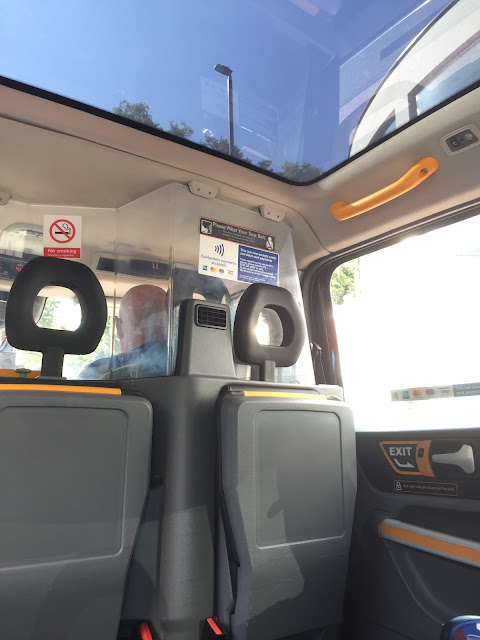








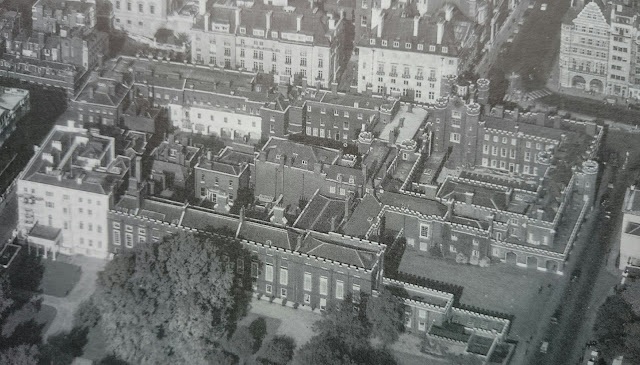



.jpg)







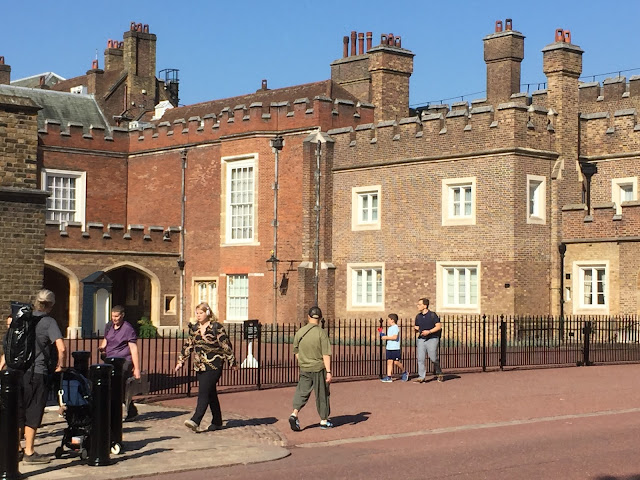






























































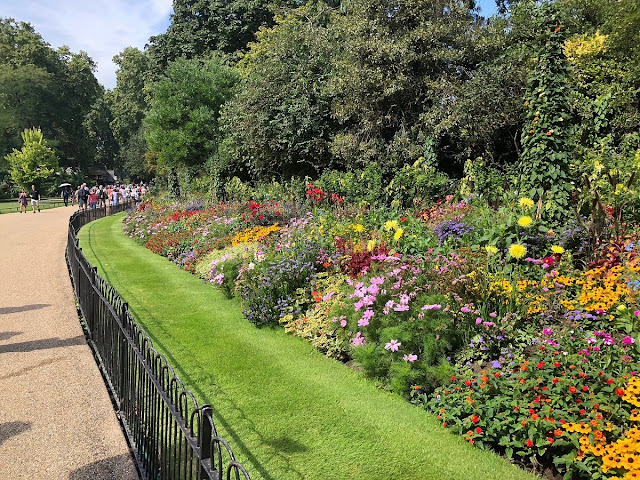














































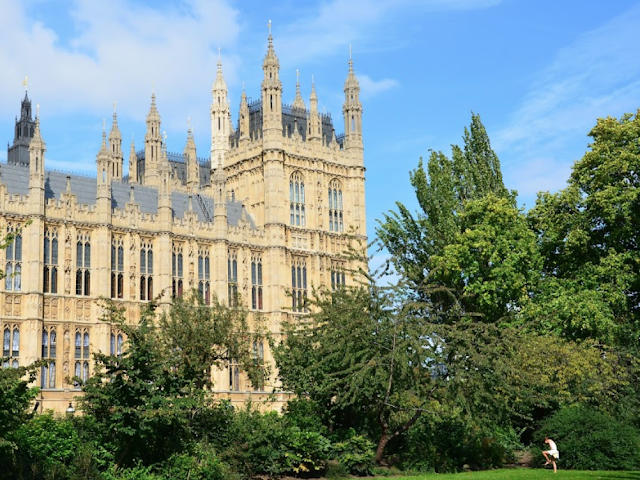










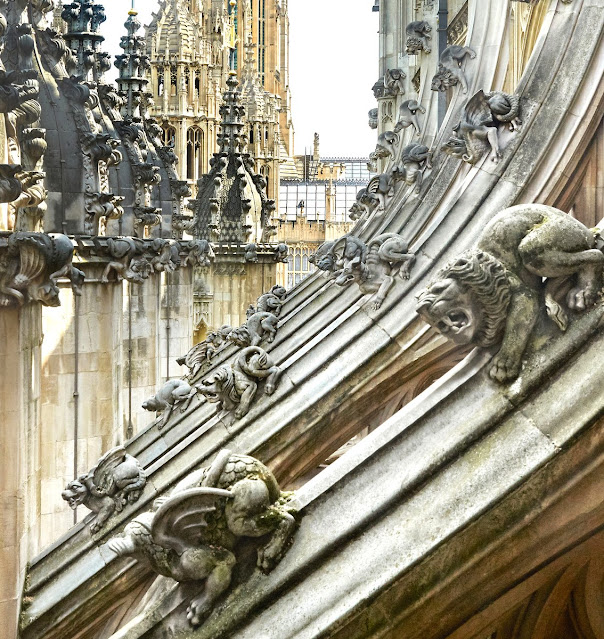

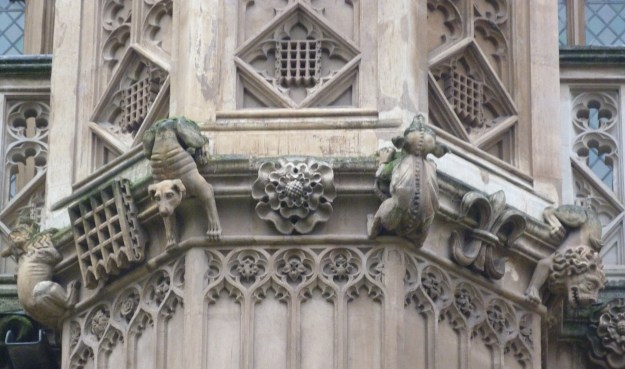
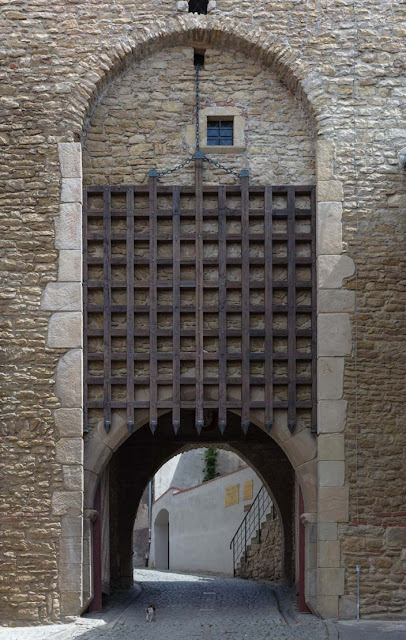








.svg.png)
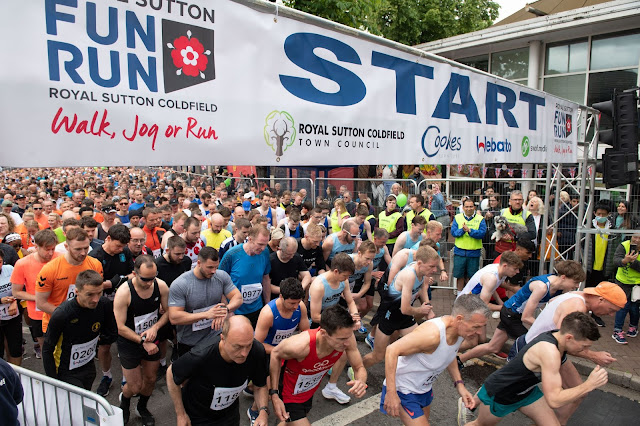





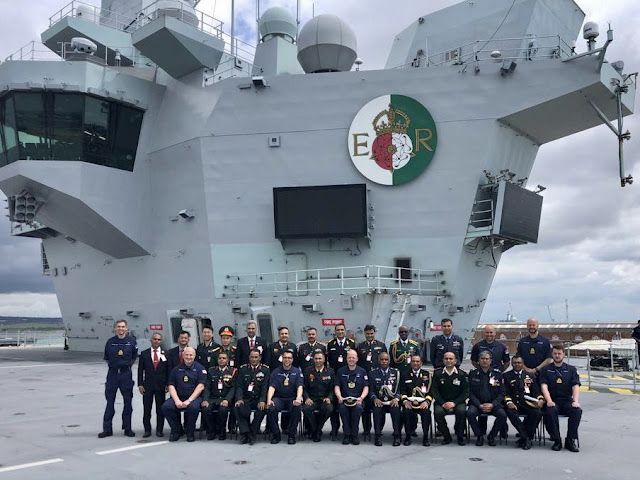

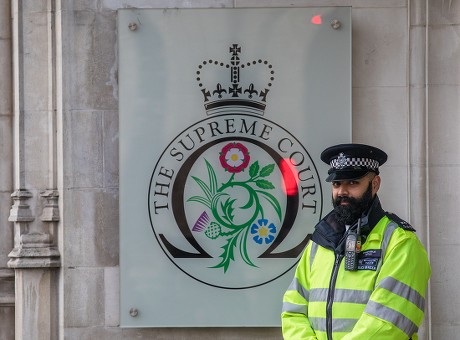


























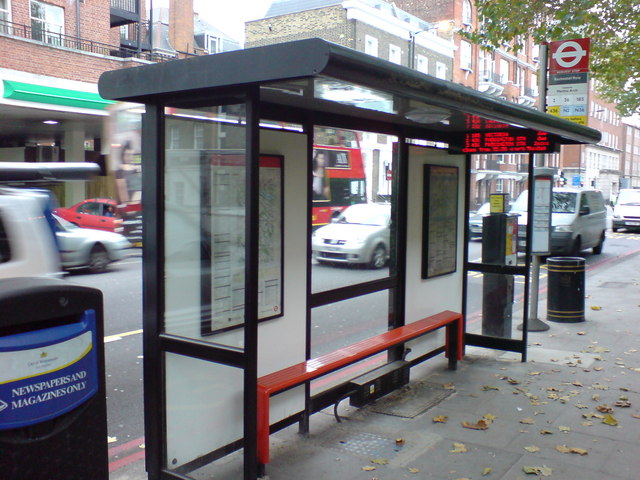





















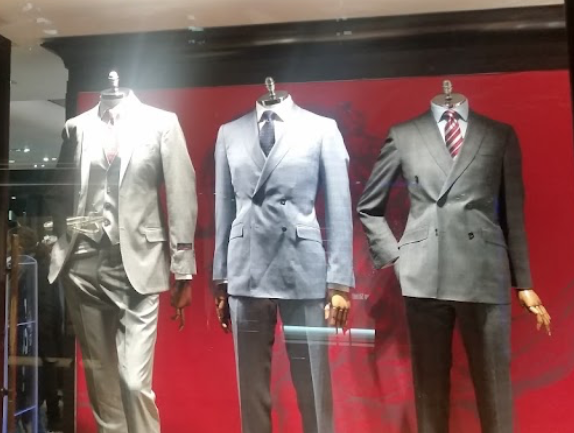

















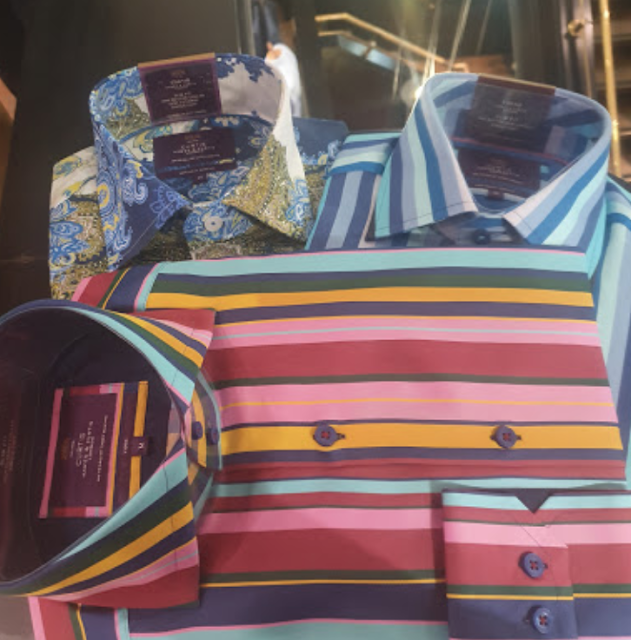





























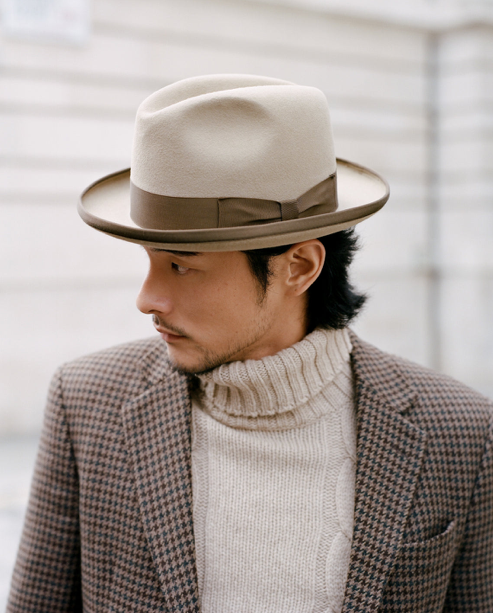







































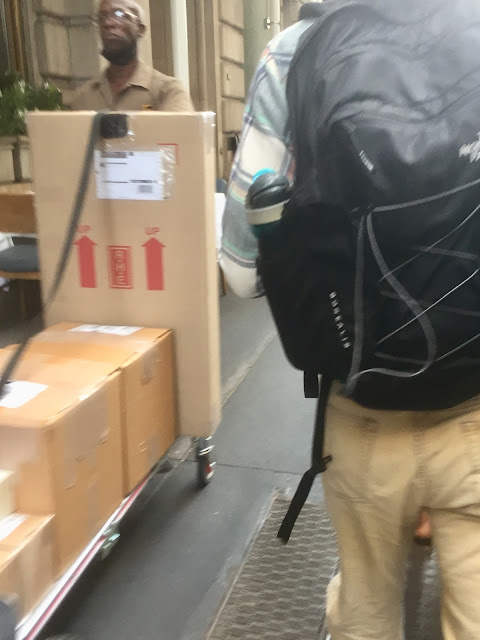

































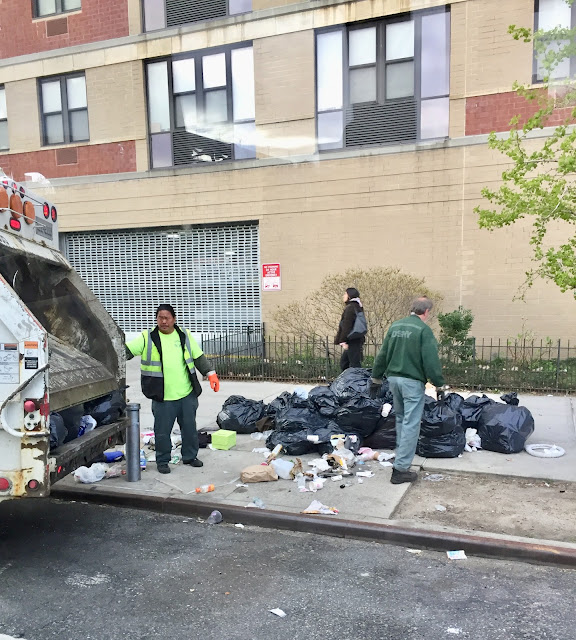

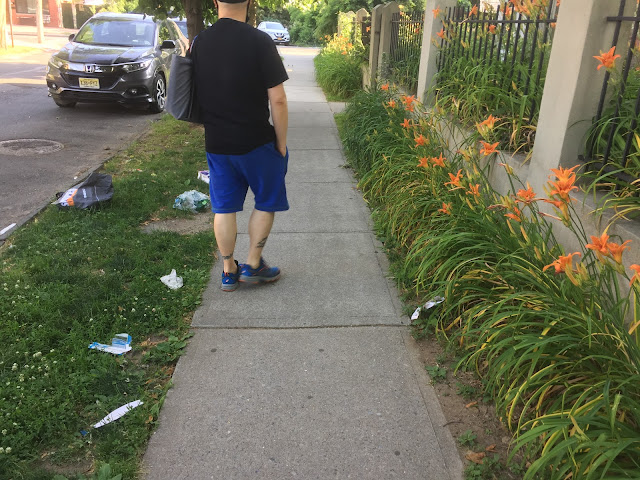

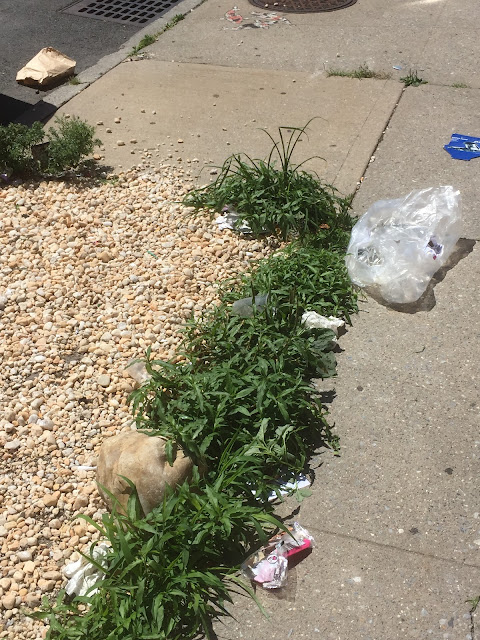













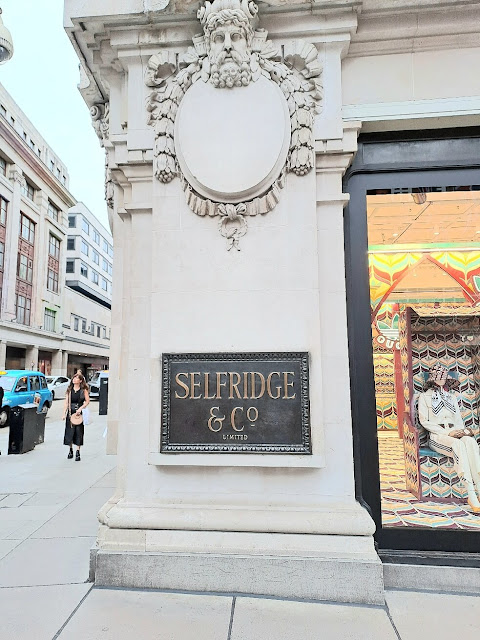





















































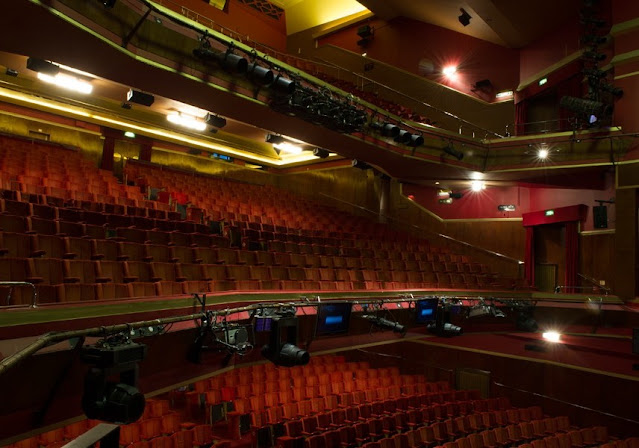










No comments:
Post a Comment
Don't be shy: leave your comments :)